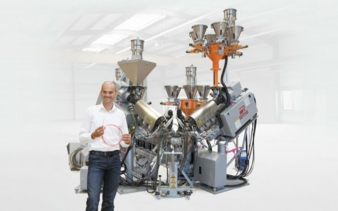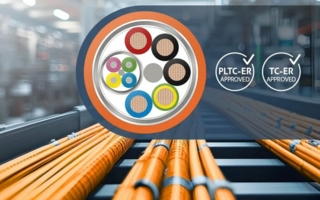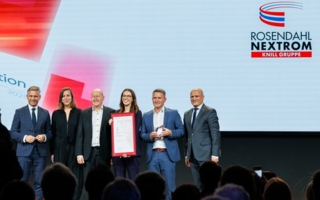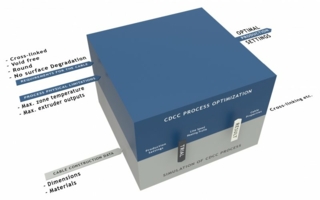19/04/2023 – Fine-tuned foaming process with artificial intelligence
How to put 40 Giga bit per second into practice
The latest generation of LAN cables, Category 8, are among the most powerful data cables on the market. In theory, they can transfer data up to 40Gb/s at a bandwidth of more than 2 Gigahertz. To put this in practice, cable production must proceed flawlessly.
40Giga bit per second – that is four times more than a 6A cable can transmit. Following this serious upgrade, Cat8 cables are especially popular for use in data centers and server rooms, driving the transitioning to higher data loads.
Higher performance requires more sophisticated cable design. With Cat8, the quality of shielding necessary to make it work is on a totally different scale. So is the insulation and sheathing of the cable. Cat8 cables used for IoT applications also have the power supply built right in and must withstand very high temperatures on the inside. All this leads to increased demands on the corresponding cable and consequently on the cable manufacturing processes.
Stable process from start to finish
For optimum data transmission, the LAN cable must have a consistent diameter, as well as perfect ovality and centricity throughout all of the layers. Only then will the metallic conductors run parallel to each other all the way and offer no room for signal attenuation. It is also important to prevent periodic vibrations on the production line. These can lead to interference points which reduce the data signal in the finished cable. Thus, to ensure that the theoretical transmission rates of Cat8 cables can also be maintained in reality, stable production is the key. All of the machines and processes, from pay-off to take-up, must be perfectly coordinated.
Rosendahl Nextrom excels due to intense process know-how and experience in insulation and sheathing technology, including an AI-supported foaming process for the typical skin-foam-skin structure of Cat8 cables.
Fine-tuned foaming process with artificial intelligence
Rosendahl’s extrusion technology in combination with a high-precision gas-dosing system ensures long-term process stability and a very fine and uniform foam structure. Just recently, the foaming process has been enhanced with the help of artificial intelligence. A self-learning algorithm continuously observes the entire process and perfectly matches individual parameters to achieve the best possible results for diameter and capacitance. It intervenes in a targeted and foresighted manner and works quickly and with great precision, leading to the perfect harmonization of all of the interdependent parameters.
The results
Reduced process variations allow for tighter tolerances, leading to improved electrical properties. In addition, due to the fast adjustments of the process controller, start-up scrap is significantly reduced.
Foaming has been one of Rosendahl’s core competencies for a long time. By using artificial intelligence for this key process, the company is expanding its technology leadership and offering a future-proof manufacturing solution for metal data cables.
Interwire 2023, booth 1531
Rosendahl Nextrom GmbH
Schachen 57
8212 Pischelsdorf, Austria
Contact person is Bianca Kranz
Tel.: +43 3113 5100-253
bianca.kranz@rosendahlnextrom.com
www.rosendahlnextrom.com





